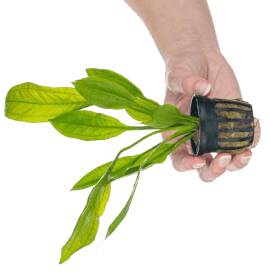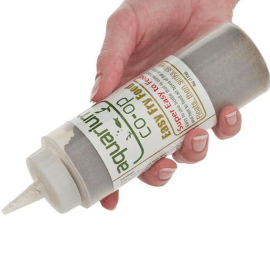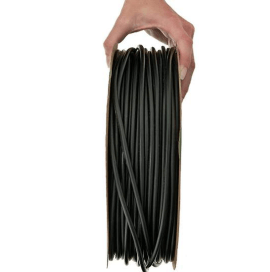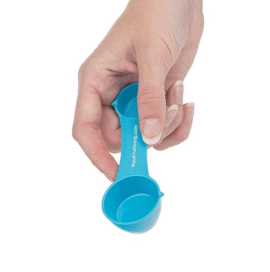Care Guide for Fancy Goldfish – Housing, Feeding, and More
Fancy goldfish (Carassius auratus) are beautiful, selectively bred freshwater fish from the carp family that come in many colors, shapes, and other traits. Unlike common goldfish with their single tails and streamlined physiques, fancy goldfish have flowy double tails and slow-moving, egg-shaped bodies that require special considerations. This care sheet answers some of the most frequently asked questions we get about these beloved water piggies.
What Size Tank Do Fancy Goldfish Need?
Appropriate aquarium size can be a point of contention among goldfish owners, but in general, we recommend 20 gallons of water volume per goldfish, with at least 10 gallons added for every other goldfish. Now, if you put one goldfish in a 20-gallon tank, it will eventually run out of room five or six years down the road, and you will be forced to do frequent water changes to keep the tank clean. Whereas if you house five or six goldfish in a 60- or 70-gallon aquarium, the tank maintenance schedule will be more manageable.

Bigger is always better when it comes to goldfish tanks, so give them as much room as possible.
In addition to water volume, consider the dimensions of the tank. Goldfish prefer a squatter tank with more water surface area (and not a tall, narrow tank). In China where goldfish were first developed, they often use giant, wide bowls with lots of surface area because it provides the fish more swimming space and more gas exchange for increased oxygen. Bottom line: get the largest tank you can afford and make sure to regularly clean it.
Do Fancy Goldfish Need a Heater?
Goldfish are known as cold water fish because they can live in temperatures of 50-70°F (10-21°C). This means that in a home with heating and air conditioning, there is no need to use a heater inside the aquarium because goldfish can live at room temperature. In fact, many people living in mild climates keep their goldfish in outdoor ponds year-round.
While you may not need a heater, filtration is very important since goldfish are gluttonous eaters and therefore produce a lot of waste. Common choices include hang-on-back filters and sponge filters that have gentle flow and are easy to maintenance. Whichever filter you pick, make sure it creates good surface agitation to increase oxygenation for your goldfish.
What Should I Feed My Fancy Goldfish?
If you feed them lots of lower quality food, they tend to contain more indigestible materials, and therefore the tank will get dirty faster and require more water changes. If you feed a “cleaner” diet with frozen foods or duckweed, the aquarium requires less maintenance, and the fish display more vibrant coloration. We like to give our goldfish frozen brine shrimp, high quality pellets, and Repashy gel foods.

Overfeeding your goldfish can lead to bloat, so consider giving them two small meals rather than one large meal per day.
Overfeeding tends to be more of an issue than underfeeding, so make sure not to spoil your goldfish too much (even when they beg like they’re starving). Also, feeding smaller meals twice a day is better than giving them a large meal once a day, since goldfish can be prone to bloating issues. There’s an Internet adage is that goldfish should never be given floating foods because they will swallow too much air and cause bloat, but we have regularly fed floating foods for more than a decade and never had problems with any of our fish.
Why Does My Goldfish Tank Have Cloudy Water?
It could be caused by several things. If the tank is newly set up or you added a lot of new goldfish recently, the cloudiness could be a bacterial bloom as the beneficial bacteria is rapidly reproducing in response to an increase in fish waste. The best course of action is to patiently wait a week without making any drastic changes to the aquarium, and the bacteria cloud will eventually disappear on its own.
If the water is cloudy because of too much particulate floating in the water, consider doing a water change and cleaning the filter because a clogged-up filter can no longer effectively remove debris from the tank. We recommend getting easy-to-use water test strips and changing the water whenever the nitrates measure above 50 ppm. Try changing 30% to 50% of the water at a time, monitor how long it takes for the nitrates to reach 50 ppm again, and then develop a weekly or monthly schedule based on the results. Of course, as the fish get bigger, they will produce more waste, so it may be worth getting them a larger tank, moving them to an outdoor pond, or rehoming them to someone with more space.
To extend the time between water changes and provide greater enrichment for the fish, we like to use live aquarium plants as decor. Given that goldfish do have a taste for veggies and like to churn up the substrate while searching for food, we have an entire article covering the best plants that are safe for goldfish. The list mostly consists of rhizome plants like anubias and ferns that can be attached to driftwood and rock so that they can’t be easily uprooted.

Robust, easy-to-grow aquarium plants can help absorb nitrogen waste compounds and reduce your maintenance frequency.
Why Is My Goldfish Acting Weird? Is It Okay?
Goldfish are funny creatures that have their own unique personalities and idiosyncrasies, so what may be normal behavior for one fish may be quite abnormal for another fish. Therefore, we recommend that you check on your goldfish at least once a day when you feed them, so that you learn over time which ones are more lethargic versus overactive and what their habits are.
Look for physical irregularities such as a large wen that has grown over the eyes or white spots that may indicate ich. Make sure everyone’s getting along and the fish aren’t breeding too aggressively with each other. Monitor the temperature, pH, and nitrates at least once a week (even during the holiday season), and you’ll have a successful tank.
There’s a bit of a stigma around goldfish keeping because beginners will buy them, get the wrong advice, put them in a small bowl, and never do water changes… resulting in dying fish. Goldfish are fairly hardy compared to more sensitive species, but you should still treat them with the same care you would give any other fish (e.g., regularly gravel vacuum the aquarium, service the filter, and test the water quality). The main caveats to remember are that a) they like cooler temperatures and b) they get much larger than most other pet store fish and therefore require a larger sized tank.




